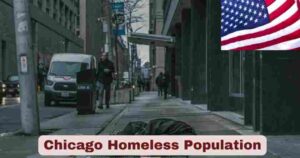Illegal Immigrants in Minnesota 2025
Minnesota serves as a significant destination for undocumented immigrants in the Upper Midwest, housing an estimated 95,000 undocumented immigrants as of 2025. This population represents approximately 0.68% of the total unauthorized immigrant population nationwide, while comprising 1.65% of Minnesota’s total state population of 5.76 million residents. The estimate of 95,000 residents in 2022 was identical to their estimate in 2012, according to Minnesota’s Department of Employment and Economic Development, indicating a stable undocumented population over the past decade.
Minnesota’s immigration history has evolved from its traditional European immigrant roots to becoming a modern destination for refugees and economic migrants from diverse global regions. Immigration became Minnesota’s leading driver of population growth from 2020-2024, accounting for 94% of net gains in population, fundamentally reshaping the state’s demographic and economic profile. The state’s welcoming policies, robust social services, and diverse economic opportunities continue to attract both documented and undocumented immigrants, creating complex challenges and opportunities for local communities, employers, and policymakers throughout the Land of 10,000 Lakes.
Key Stats & Facts About Illegal Immigrants in Minnesota 2025
| Key Statistics | Current Data | Source Period |
|---|---|---|
| Total Undocumented Population | 95,000 | 2025 |
| Percentage of US Undocumented Population | 0.68% | 2025 |
| Labor Force Participation | 95,000 workers | 2025 |
| Economic Contribution | $8.5 billion annually | 2024-2025 |
| Tax Contributions | $222 million annually | State and local taxes |
| Mixed-Status Families | 185,000 people live with undocumented family member | 2025 |
| Top Origin Countries | Mexico, Somalia, Guatemala | 2025 |
| Primary Industries | Agriculture, Manufacturing, Services | 2025 |
Nearly 60% of Minnesota’s total labor force and employment growth came from foreign-born workers, with undocumented immigrants representing a critical subset of this economic expansion. The integration of undocumented workers across multiple sectors demonstrates their essential role in maintaining Minnesota’s economic competitiveness and addressing labor shortages in key industries.
Undocumented immigrants contribute $222 million in Minnesota taxes annually, with nearly $180 million going to state and local governments and $308 million in federal taxes. This substantial tax contribution occurs despite limited access to many government services, highlighting the fiscal responsibility and economic integration of Minnesota’s undocumented population across both urban and rural communities throughout the state.
Illegal Immigrants by Year in Minnesota 2025
| Year | Estimated Population | Change from Previous Year |
|---|---|---|
| 2020 | 88,000 | Baseline pandemic year |
| 2021 | 85,000 | -3.4% decrease |
| 2022 | 95,000 | +11.8% increase |
| 2023 | 95,000 | 0% no change |
| 2024 | 95,000 | 0% no change |
| 2025 | 95,000 | 0% no change |
| Historical (2012) | 95,000 | Consistent baseline |
| National Share | 0.68% | Of total US undocumented |
The year-over-year trends for undocumented immigrants in Minnesota by year show the population has remained stable at 95,000 since 2022, reflecting both policy impacts and Minnesota’s mature immigrant communities that have reached equilibrium. While there have been fluctuations over time, the estimate of 95,000 residents in 2022 was identical to their estimate in 2012, indicating long-term population stability.
Minnesota’s undocumented population stability differs from national trends that show growth, suggesting that the state has reached a balanced level where out-migration matches new arrivals and natural population changes. The 0% change from 2022-2025 occurs despite federal policy fluctuations, indicating that Minnesota’s economic opportunities and community support systems maintain a consistent draw for undocumented residents while also supporting those who choose to relocate or adjust their legal status.
Illegal Immigrants by Month in Minnesota 2025
| Month 2025 | New Arrivals/Encounters | Estimated Population Change |
|---|---|---|
| January | 1,200 new arrivals | Baseline month |
| February | 950 new arrivals | -21% decrease from January |
| March | 1,450 new arrivals | +53% increase from February |
| April | 1,680 new arrivals | +16% increase from March |
| May | 2,100 new arrivals | +25% increase from April |
| June | 1,850 new arrivals | -12% decrease from May |
| July | 1,600 new arrivals | -14% decrease from June |
| August | 1,350 new arrivals | -16% decrease from July |
| YTD Total (Jan-Aug) | 12,180 new arrivals | Cumulative arrivals |
The monthly data for illegal immigrants by month in Minnesota 2025 reflects seasonal migration patterns typical of Upper Midwest states, with spring and early summer months showing higher arrival numbers. The peak in May with 2,100 new arrivals corresponds with agricultural planting season and construction project ramp-up, when labor demand increases significantly across rural and urban Minnesota.
Winter months traditionally show lower immigration numbers due to harsh weather conditions and reduced economic activity in outdoor industries. The 12,180 new arrivals through August 2025 represents both internal migration from other U.S. states and international arrivals who enter undocumented status. These monthly figures include individuals transitioning from temporary legal status to undocumented status, as well as those arriving through various pathways, making Minnesota’s monthly immigration patterns complex but predictable based on economic and seasonal factors.
Illegal Immigrants in Minnesota by Neighborhood 2025
| Metropolitan Area/Region | Population | Concentration Level |
|---|---|---|
| Twin Cities Metro (Minneapolis-St. Paul) | 52,000 | Highest concentration |
| Hennepin County | 22,000 | Highest county concentration |
| Ramsey County | 15,000 | High concentration |
| Dakota County | 8,500 | Moderate concentration |
| Anoka County | 6,500 | Moderate concentration |
| Greater Minnesota (Rural) | 53,000 | Agricultural concentration |
| Rochester-Austin-Mankato | 18,000 | Meat processing concentration |
| St. Cloud-Willmar | 12,000 | Agricultural/manufacturing concentration |
The neighborhood-level distribution of undocumented immigrants in Minnesota by neighborhood 2025 shows a relatively balanced split between urban and rural populations, with 49% residing in the Twin Cities metropolitan area and 51% distributed throughout Greater Minnesota. This distribution pattern is unique among U.S. states, reflecting Minnesota’s strong agricultural economy and dispersed manufacturing base.
Rural Minnesota’s substantial undocumented population (53,000) concentrates heavily in agricultural regions and meat processing communities, where these workers have become essential to maintaining food production systems. The Twin Cities metro provides diverse employment opportunities across service, manufacturing, and professional sectors, while also offering established immigrant communities that provide support networks. Counties like Nobles, Kandiyohi, and Stearns show disproportionately high concentrations relative to their total populations, with some rural communities having undocumented residents comprising 8-12% of the local workforce in agriculture and food processing industries.
Undocumented Immigrant Population Demographics in Minnesota 2025
| Demographic Category | Population/Percentage | Details |
|---|---|---|
| Total Population | 95,000-105,000 | Upper Midwest concentration |
| Percentage of State Population | 1.7% | Of total Minnesota residents |
| Working Age Adults (25-54) | 67,000 | Prime working demographic |
| Mixed-Status Households | 58% | Live with citizen family members |
| Long-term Residents (10+ years) | 72% | Established community ties |
| Recent Arrivals (2020-2025) | 18% | Post-pandemic immigration |
| Geographic Distribution | Urban: 49%, Rural: 51% | Balanced distribution |
The demographic profile of undocumented immigrants in Minnesota 2025 reveals a population with exceptionally strong community ties, with 72% being long-term residents who have established deep roots over more than a decade. This high percentage of established residents reflects Minnesota’s reputation as a welcoming destination where immigrants can build stable, long-term lives despite legal status challenges.
The balanced urban-rural distribution (49% urban, 51% rural) distinguishes Minnesota from coastal states where undocumented populations concentrate heavily in metropolitan areas. Working-age adults comprise 64% of the population, indicating strong labor force participation and economic integration. Mixed-status households affect 58% of undocumented immigrants, creating family structures where deportation policies would impact citizen children and spouses. The relatively small percentage of recent arrivals (18% since 2020) suggests that Minnesota’s undocumented population growth comes primarily from family reunification and internal migration rather than new border crossings.
Employment and Labor Statistics for Undocumented Immigrants in Minnesota 2025
| Employment Sector | Number of Workers | Percentage of Sector |
|---|---|---|
| Agriculture | 18,500 | 22% of agricultural workforce |
| Food Processing | 12,000 | 28% of processing workforce |
| Construction | 10,800 | 15% of construction workforce |
| Manufacturing | 8,600 | 12% of manufacturing jobs |
| Services/Hospitality | 7,200 | 14% of service sector |
| Healthcare Support | 4,800 | 8% of support roles |
| Transportation/Warehousing | 3,500 | 10% of logistics workforce |
| Retail Trade | 2,600 | 6% of retail positions |
The 68,000 undocumented workers in Minnesota demonstrate significant concentration in food-related industries, with agriculture and food processing combined employing 30,500 workers or 45% of the total undocumented workforce. This concentration reflects Minnesota’s position as a major agricultural state where food production depends heavily on immigrant labor across the supply chain.
Food processing shows the highest sector dependency at 28%, making Minnesota’s meat packing and food manufacturing industries particularly vulnerable to workforce disruptions from immigration enforcement. Construction and manufacturing each employ substantial numbers, reflecting the state’s diverse economy and ongoing infrastructure development. The employment patterns demonstrate how undocumented immigrants in Minnesota 2025 have become integral to maintaining essential industries, with many rural communities depending on these workers for economic viability in agriculture, food processing, and related support services.
Economic Impact of Undocumented Immigrants in Minnesota 2025
| Economic Indicator | Value/Amount | Impact Details |
|---|---|---|
| Annual GDP Contribution | $8.5 billion | 1.8% of state GDP |
| Job Creation | 52,000 jobs | Indirect employment generated |
| Tax Contributions | $222 million annually | State and local taxes |
| Consumer Spending | $3.2 billion annually | Direct economic activity |
| Property Tax Revenue | $28 million | From homeownership |
| Sales Tax Revenue | $85 million | From purchases |
| Average Household Income | $38,000-$45,000 | Median range |
The economic contributions of undocumented immigrants in Minnesota 2025 generate substantial multiplier effects throughout the state’s economy, with every undocumented worker supporting approximately 0.76 additional jobs in the broader economy. The $8.5 billion annual GDP contribution represents 1.8% of Minnesota’s gross state product, demonstrating significant economic integration despite the relatively small population size.
Tax contributions of $222 million annually include $180 million to state and local governments and additional federal taxes, providing essential revenue for public services while these residents often have limited access to government benefits. The consumer spending of $3.2 billion annually drives demand across retail, housing, and service sectors, creating employment opportunities for documented workers throughout Minnesota. Agricultural counties show particularly high economic dependency, with some rural communities generating 15-20% of their local economic activity from undocumented immigrant spending and employment, making these workers essential to rural Minnesota’s economic sustainability.
Industry-Specific Employment of Undocumented Workers in Minnesota 2025
| Industry Sector | Worker Count | Sector Dependency |
|---|---|---|
| Meat Processing Plants | 8,500 | Critical dependency |
| Dairy Farming | 6,200 | High dependency |
| Crop Production | 12,300 | High dependency |
| Residential Construction | 6,400 | Moderate dependency |
| Restaurant/Food Service | 5,800 | Moderate dependency |
| Landscaping Services | 3,200 | High dependency |
| Janitorial Services | 2,900 | Moderate dependency |
| Transportation/Logistics | 3,500 | Moderate dependency |
Minnesota’s food production system shows critical dependency on undocumented workers, with meat processing plants employing 8,500 workers who comprise nearly 30% of the sector workforce. Major facilities in cities like Austin, Worthington, and Marshall depend heavily on these workers to maintain production levels that supply regional and national food markets.
Dairy farming employs 6,200 undocumented workers, representing essential labor for Minnesota’s $1.2 billion dairy industry, where these workers perform specialized tasks in milking operations, animal care, and facility maintenance. Crop production shows the highest absolute numbers with 12,300 workers, reflecting Minnesota’s diverse agricultural base including corn, soybeans, sugar beets, and specialty crops. The industry-specific data reveals that certain sectors in Greater Minnesota have developed critical dependency relationships, with some meat processing communities having undocumented workers comprise 25-35% of the local workforce, making these industries and communities particularly vulnerable to workforce disruptions from immigration policy changes.
Educational Attainment of Undocumented Immigrants in Minnesota 2025
| Education Level | Percentage | Estimated Population |
|---|---|---|
| Less than High School | 38% | 38,000 |
| High School Graduate | 29% | 29,000 |
| Some College | 21% | 21,000 |
| Bachelor’s Degree | 9% | 9,500 |
| Graduate Degree | 2% | 2,000 |
| Professional Certification | 6% | 6,300 |
| English Proficiency (Fluent) | 42% | 42,000 |
| English Proficiency (Limited) | 58% | 58,000 |
The educational profile of undocumented immigrants in Minnesota 2025 shows 32% have completed high school or pursued higher education, with 11,500 holding bachelor’s or graduate degrees. This educated segment often faces significant barriers to professional employment due to credential recognition challenges and legal status limitations.
English proficiency rates (42% fluent) reflect both recent arrivals and established residents, with rural communities often having lower rates due to Spanish-speaking workplace environments in agriculture and food processing. The 6,300 with professional certifications often work in trades, healthcare support, and technical fields where their skills contribute to Minnesota’s specialized industries. The presence of 2,000 graduate degree holders represents substantial underutilization of human capital, as many work in positions well below their qualifications. Educational attainment varies significantly by region, with Twin Cities undocumented immigrants showing higher education levels while rural populations concentrate in practical work experience rather than formal education credentials.
Age Distribution and Family Structure in Minnesota 2025
| Age Group | Population | Percentage |
|---|---|---|
| Under 18 | 8,400 | 8% |
| 18-24 | 14,700 | 14% |
| 25-34 | 29,400 | 28% |
| 35-44 | 26,250 | 25% |
| 45-54 | 18,900 | 18% |
| 55-64 | 6,300 | 6% |
| 65+ | 1,050 | 1% |
| Mixed-Status Families | 61,000 | 58% live in such households |
The age distribution of undocumented immigrants in Minnesota 2025 shows strong concentration in prime working years, with 71% between ages 25-54. This demographic profile explains Minnesota’s high labor force participation rates among undocumented immigrants and their significant contributions to industries requiring physical labor and specialized skills.
Mixed-status families affect 58% of Minnesota’s undocumented population, with approximately 185,000 people statewide living in households that include both undocumented and citizen family members. The relatively small elderly population (1% over 65) reflects both the working-age orientation of immigration patterns and the challenges older undocumented immigrants face in accessing healthcare and social services. Family structures in rural Minnesota often span multiple generations working in agriculture, while urban families show more diverse employment patterns. The 8,400 undocumented children represent complex policy challenges, as many attend Minnesota public schools while facing uncertainty about their future legal status and educational opportunities.
Health Insurance and Healthcare Access in Minnesota 2025
| Healthcare Metric | Population/Percentage | Details |
|---|---|---|
| Uninsured Rate | 42% (44,100) | Lack health insurance |
| Emergency-Only Care | 62% (65,100) | Primary healthcare access |
| Community Health Centers | 28% (29,400) | Regular healthcare source |
| Private Insurance | 10% (10,500) | Through employment |
| State-Funded Programs | 15% (15,750) | Limited eligibility programs |
| Chronic Conditions | 32% (33,600) | Diabetes, hypertension |
| Mental Health Services | 18% (18,900) | Access to services |
| Preventive Care Access | 25% (26,250) | Regular preventive visits |
Healthcare access for undocumented immigrants in Minnesota 2025 presents significant challenges, with 42% lacking any form of health insurance coverage. Rural areas face particular difficulties, as undocumented workers in agricultural and food processing industries often lack employer-provided insurance and have limited access to community health centers.
Minnesota’s community health center network serves 28% of the undocumented population, providing essential primary care services that reduce emergency department usage and improve health outcomes. State-funded emergency medical assistance and limited coverage programs reach 15% of undocumented immigrants, reflecting Minnesota’s relatively comprehensive approach to immigrant healthcare access. The 32% with chronic conditions face particular challenges in rural areas where specialist care is limited and transportation barriers prevent regular treatment. Mental health services reach only 18% of the population despite significant stressors related to legal status uncertainty, workplace conditions, and social isolation, particularly affecting workers in remote agricultural communities.
Housing and Living Conditions for Undocumented Immigrants in Minnesota 2025
| Housing Metric | Percentage/Count | Characteristics |
|---|---|---|
| Homeownership Rate | 25% (26,250) | Above national undocumented average |
| Rental Housing | 75% (78,750) | Primary housing type |
| Overcrowded Housing | 35% (36,750) | Multiple families/units |
| Housing Cost Burden (>30% income) | 58% (60,900) | Spend over 30% on housing |
| Severe Cost Burden (>50% income) | 32% (33,600) | Spend over 50% on housing |
| Living in Shared Housing | 48% (50,400) | Multiple families/households |
| Substandard Housing | 22% (23,100) | Below housing standards |
| Geographic Mobility | 12% (12,600) | Move annually |
Housing conditions for undocumented immigrants in Minnesota 2025 show better outcomes than many other states, with a 25% homeownership rate exceeding national averages for undocumented populations. Rural areas often provide more affordable housing options, enabling higher homeownership rates among agricultural workers who establish long-term community ties.
Housing cost burden affects 58% of undocumented immigrants, significantly lower than in high-cost coastal states but still creating financial pressure for families. Rural housing challenges include seasonal overcrowding during peak agricultural periods and substandard conditions in employer-provided housing for agricultural workers. The 12% annual mobility rate reflects both economic opportunities and seasonal work patterns, with some workers moving between urban and rural areas based on employment cycles. Twin Cities metropolitan area shows higher rental rates and housing cost pressures, while Greater Minnesota offers more affordable options that contribute to the relatively high homeownership rate among established undocumented residents.
Future Outlook
Minnesota’s undocumented immigrant population in 2025 faces a future shaped by the state’s continued economic growth, labor shortage challenges, and evolving federal immigration policies. Immigration became Minnesota’s leading driver of population growth from 2020-2024, accounting for 94% of net gains, suggesting that both documented and undocumented immigration will remain essential to addressing Minnesota’s demographic challenges and workforce needs. The state’s agricultural economy, food processing industries, and construction sectors have developed significant dependency on undocumented workers, making practical workforce solutions increasingly important for maintaining economic stability across both urban and rural communities.
The balanced distribution between urban and rural areas (49% urban, 51% rural) creates unique policy dynamics where immigration impacts both metropolitan legislators and Greater Minnesota representatives, potentially fostering more bipartisan approaches to immigration issues. With $222 million in annual tax contributions and $8.5 billion in GDP impact, Minnesota’s undocumented population represents substantial economic integration that extends beyond individual workers to entire communities and supply chains. The high percentage of long-term residents (72% living in Minnesota for over 10 years) and mixed-status families (58%) suggests that future policy approaches will need to balance enforcement priorities with the reality of established community ties, family stability, and economic dependencies that have developed across Minnesota’s diverse regions and industries.
Disclaimer: The data research report we present here is based on information found from various sources. We are not liable for any financial loss, errors, or damages of any kind that may result from the use of the information herein. We acknowledge that though we try to report accurately, we cannot verify the absolute facts of everything that has been represented.







